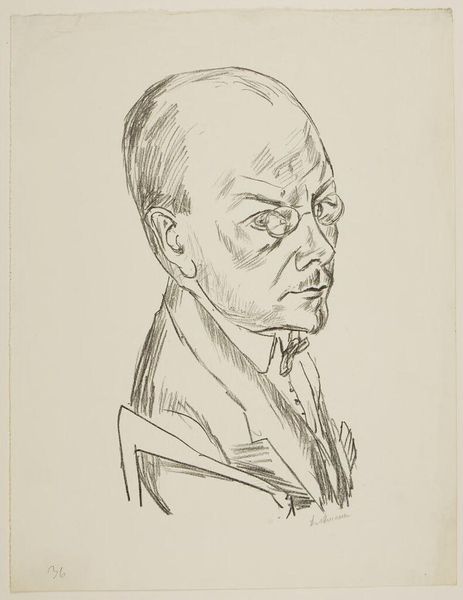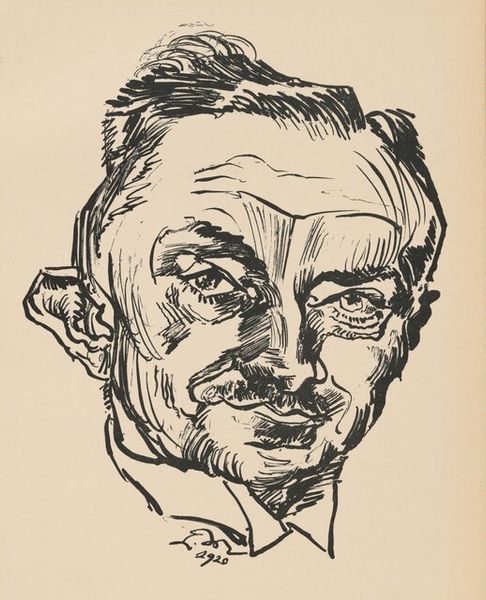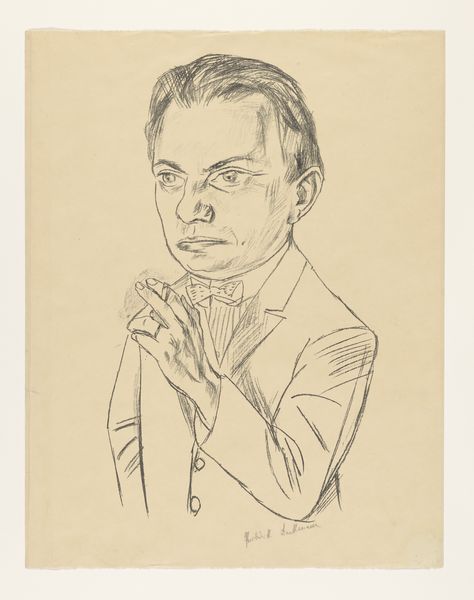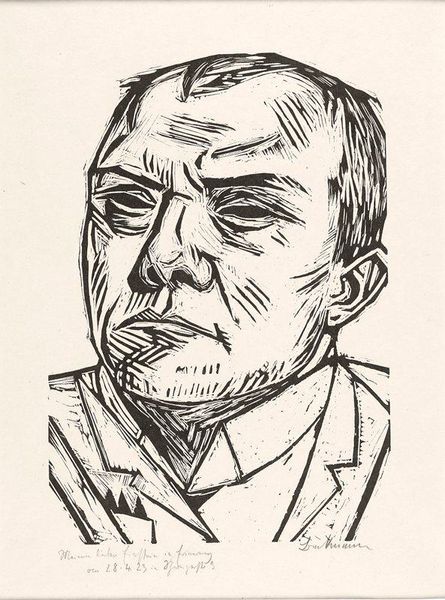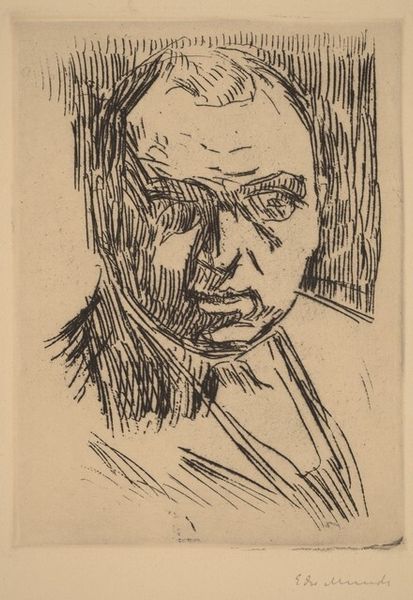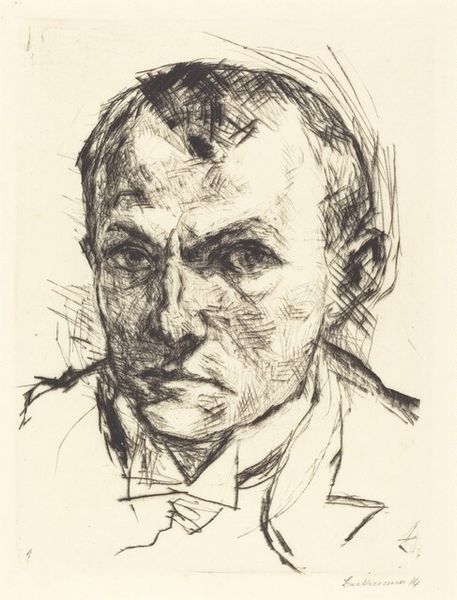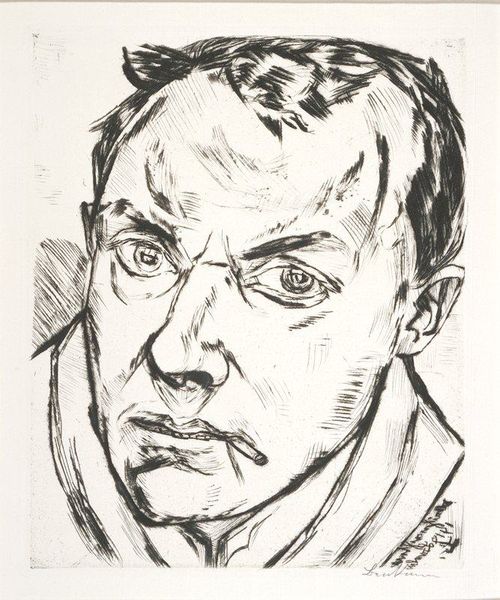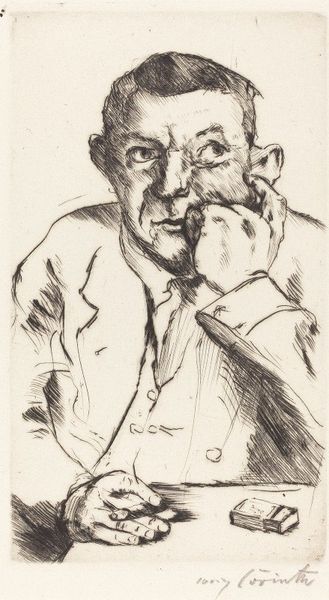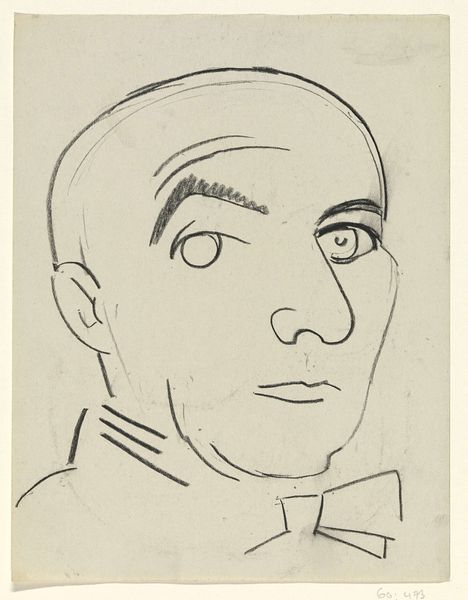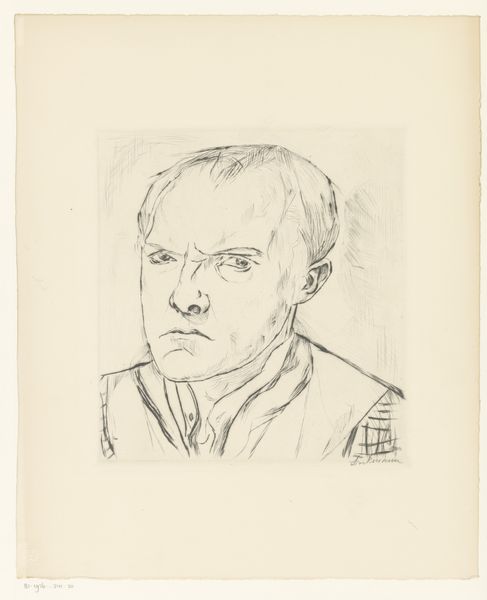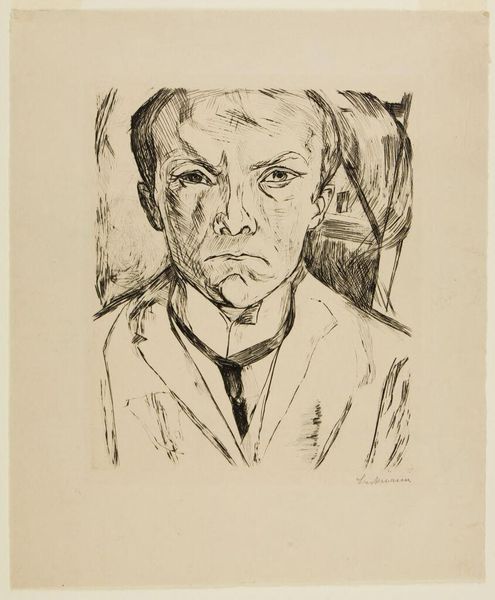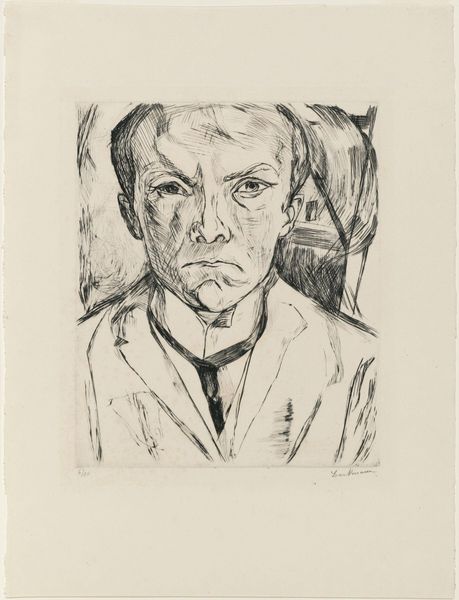
drawing, print
#
portrait
#
drawing
#
self-portrait
# print
#
caricature
#
caricature
#
german-expressionism
#
expressionism
#
line
#
portrait drawing
Copyright: National Gallery of Art: CC0 1.0
Curator: Looking at this drawing, there's a definite intensity, a contained unease. What's your immediate take? Editor: Those harsh, etched lines create such stark contrast. There’s almost no mid-tone; it’s pure light and shadow battling for dominance on his face. It lends the piece a rawness, an unfinished quality, even though it is very striking as it is. Curator: This is Max Beckmann's “Self-Portrait (Selbstbildnis)” from 1920. Beckmann, particularly after his experiences in World War I, used self-portraits to explore the fragmented, disoriented self in the face of societal upheaval. You see that reflected even here in his use of line. Editor: The cross-hatching feels almost brutal. There's no attempt to soften or idealize the features. It’s an almost forensic examination. The eyes, especially, are rendered with a sort of frantic energy, darting off, creating some tension in the presentation, so as if to unsettle the composition. Curator: Expressionist artists after the war grappled with the psychological scars and questioned what it meant to be human. Consider his inclusion of the cigarette, and how that plays a role. It might symbolize both contemplation and nervous energy, even destruction or disease as it consumes itself. Editor: That cigarette acts almost like a visual pivot, leading the eye back into the face and that intense gaze. His eyes seem to carry a hidden world in the portrait. They carry this unsettling psychological state that the work evokes. Curator: Indeed. The visual vocabulary he's working with—the distortion, the intensity—all convey that sense of inner turmoil. It is as though he is trying to see himself. His self. Not just as he is but who he is—revealed. Editor: It's a remarkable example of how formal choices – the heavy linework, the limited tonal range – can amplify and visually convey a portrait. It really exemplifies Expressionism’s aims of capturing not outward appearances, but intense, inner emotional experiences. Curator: Ultimately, Beckmann invites us to confront not only his own reflected image but the unsettling realities of his time and maybe our own humanity too. Editor: I found his process in visualizing turmoil by manipulating light and shadow. Hopefully visitors can too, find this artwork compelling in that respect.
Comments
No comments
Be the first to comment and join the conversation on the ultimate creative platform.
